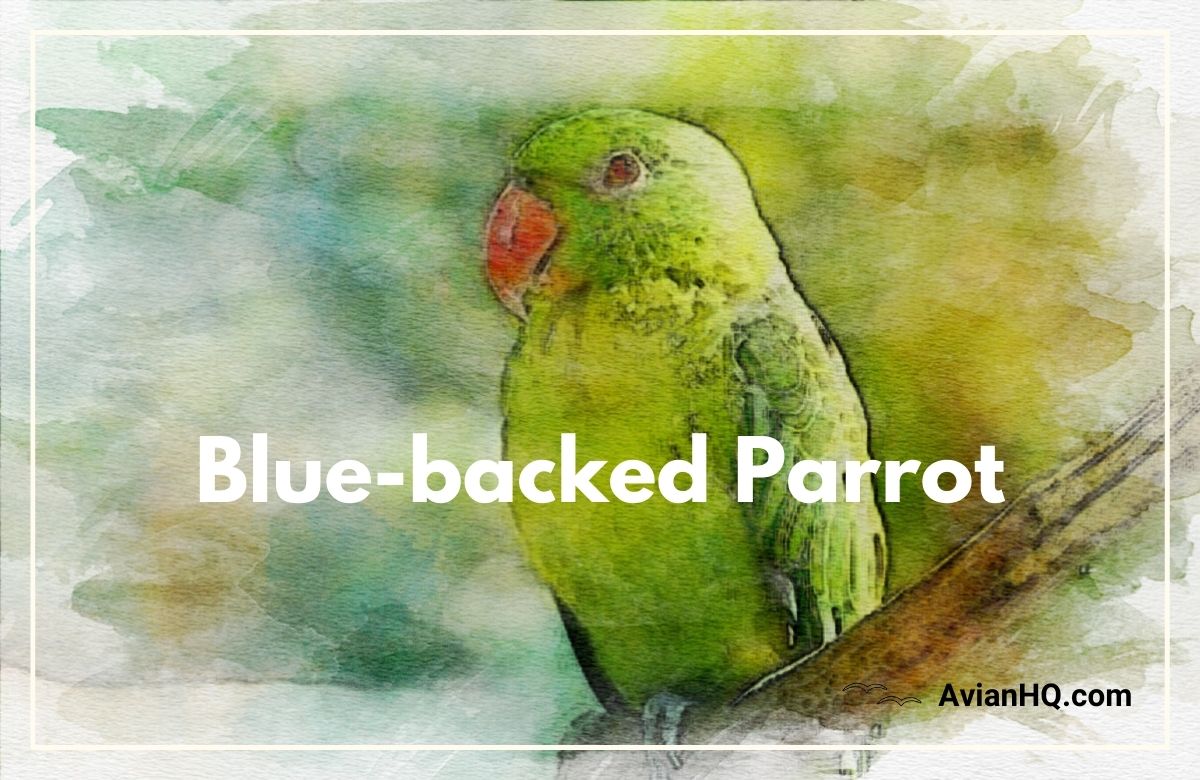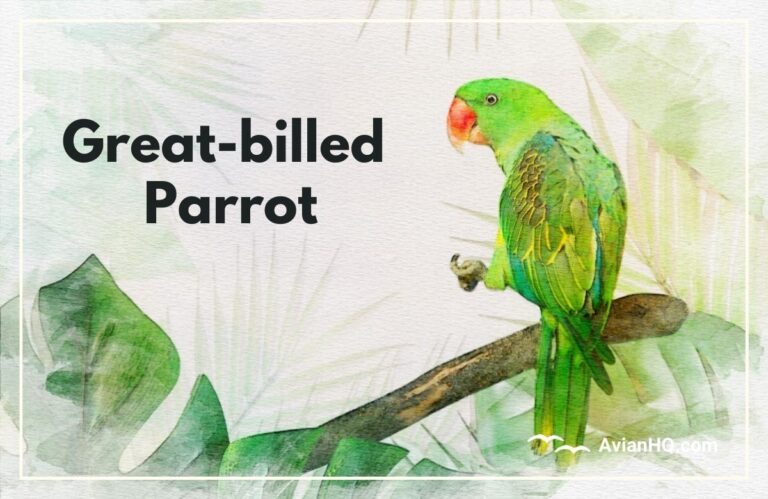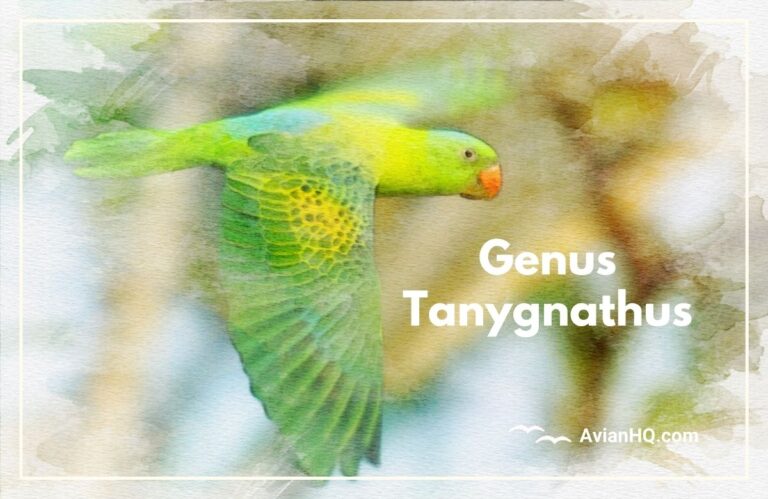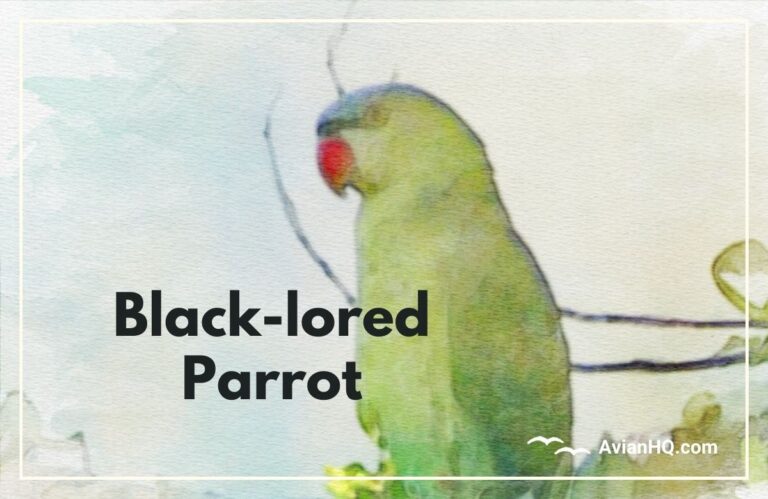Blue-backed Parrot (Tanygnathus everetti)
The brilliant plumage and unique vocalizations of parrots make them popular pets and captives. Unfortunately, this also means many parrot species face threats from trapping and habitat loss. One such species, the blue-backed parrot (Tanygnathus everetti), faces a precarious future. This rare parrot, also called Mueller’s parrot or the azure rumped parrot, clings to survival in the Philippine islands.
As you learn about this endangered bird, you’ll understand why protecting it matters. Tracing it’s taxonomy reveals the blue-backed parrot’s place among it’s relatives. Examining it’s appearance and behaviors provides insight into it’s rainforest home. Reviewing it’s status across different island groups highlights the need for focused conservation efforts.
“We cannot win this battle to save species and environments without forging an emotional bond between ourselves and nature as well – for we will not fight to save what we do not love.”
- Stephen Jay Gould
The blue-backed parrot’s specialized adaptations and limited range demonstrate the fragility of existence for endemic species. Yet a glimpse of these birds in flight or a chance to observe their nesting rituals allows us to appreciate the wonders of parrot diversity. Through increased awareness and commitment to conservation, we can ensure this unique species continues to brighten the forests of the Philippines.
Taxonomy and Classification
The blue-backed parrot was originally classified as a subspecies of the azure-rumped parrot (Tanygnathus sumatranus).
In 2020, the IUCN Red List and BirdLife International recognized it as a distinct species, Tanygnathus everetti. This separation was confirmed by the International Ornithological Congress in 2022.
The four recognized subspecies of the blue-backed parrot are:
- T. e. burbidgii – Sulu Islands
- T. e. everetti – Central islands
- T. e. duponti – Luzon
- T. e. freeri – Polillo Islands
Recent genetic studies suggest the populations on Sulu (burbidgii) may warrant elevation to full species status.
The blue-backed parrot belongs to the bird family Psittaculidae and the genus Tanygnathus. This genus contains one other species, the Great-billed parrot.
The common names refer to the bright blue patch on the back and rump. The species name everetti honors British ornithologist Alfred Hart Everett, who first described the bird.
Refined taxonomy helps clarify the unique traits and conservation needs of the blue-backed parrot as compared to close relatives. Ongoing genetic analysis and field studies will continue to inform classification within this group.
Physical Appearance
The blue-backed parrot measures about 12.5 inches (32 cm) long. It’s weight ranges between 8-11.5 ounces (230-330 grams). This makes it a medium-sized parrot.
The plumage consists primarily of green feathers, with some key distinctive markings:
- Yellow edging on the wings
- Blue rump
- Blue patches on the wing bends
The head, back, wings, and tail have a darker green coloration. The belly and collar display lighter green hues.
There are four recognized subspecies, each with slightly different color patterns:
- T. e. burbidgii – Sulu Islands. Darker green overall with lighter collar. Red iris. Much larger at 40 cm.
- T. e. everetti – Central islands. Mantle and back darker green, lighter rump and head. Blue tinge to mantle. Red iris.
- T. e. duponti – Luzon. Green with yellow collar. Yellowish underwing. Red iris.
- T. e. freeri – Polillo Islands. More uniform green, extra yellow on nape. Red iris.
The species exhibits sexual dimorphism in the color of it’s beak. Males have a red beak, while females have a pale yellow or horn-colored beak.
The juveniles closely resemble the adult plumage. No distinct young bird plumage exists.
The blue-backed parrot’s vibrant plumage likely plays a role in mate attraction and mating rituals. The differences between subspecies may relate to localized adaptations. The red iris common to most populations also seems significant, possibly aiding with visualization.
Habitat and Distribution
The blue-backed parrot resides exclusively in the Philippines, ranging across the islands of Luzon, Polillo, Panay, Negros, Leyte, Samar, and Mindanao.
This species mainly inhabits lowland and lower montane forests up to approximately 2600 feet (800 m) in elevation. Flocks frequent forest edges and areas of cultivation near primary forest.
The four subspecies each occupy defined portions of the overall range:
- T. e. burbidgii – Sulu Archipelago
- T. e. everetti – Central and southern islands
- T. e. duponti – Luzon
- T. e. freeri – Polillo Islands
The total extent of occurrence across the blue-backed parrot’s island chain habitat is estimated at less than 46,300 square miles (120,000 square km).
Within these forests, blue-backed parrots prefer intact primary rainforest with large trees for nesting. They also utilize adjacent degraded forests and wooded cultivation for foraging. The dependence on native forest habitat makes the species vulnerable to deforestation.
Protecting substantial tracts of lowland forest across the Philippines will be crucial for sustaining wild populations. Ecotourism potential also exists if sightings can be reliably provided while limiting disturbance to breeding birds.
Diet and Feeding
The diet of the blue-backed parrot consists mainly of fruits, seeds, nuts, and berries.
Based on related species, they likely consume fruits from native forest trees such as figs (Ficus sp.) and tea trees (Leptospermum sp.).
Nuts and seeds also seem to be a dietary staple, particularly those of rainforest canopy trees. The strong beak allows the parrots to crack open hard nuts and seeds.
Berries and other soft fruits provide abundant nutrition when in season. The birds swallow these fruits whole.
These parrots employ a variety of feeding behaviors and methods:
- Foraging in small flocks, most active in early morning and late afternoon
- Perching and reaching to pick fruits and berries
- Climbing along branches to reach seed pods
- Floating seeds in water to separate edible portion
- Cracking hard nuts and seeds with their beak
This diverse diet based on wild rainforest foods provides key nutrition for the parrots. But it also means protecting food trees within native forest habitat is essential for preserving food resources. Provisioning with cultivated fruits may help supplement wild populations.
Breeding and Reproduction
Little detailed information exists on the breeding habits of the blue-backed parrot, but some inferences can be made based on related species.
They likely nest in naturally forming tree cavities, or possibly old woodpecker holes. The nest site is probably 10-30 feet (3-9 m) high up in a large rainforest tree.
Clutch size is estimated at 2-3 eggs. The female incubates the eggs for about 23-25 days.
Both parents feed the hatchlings with regurgitated food. The chicks fledge at 8-10 weeks old.
Breeding season activity seems to peak in April, but may vary across the species’ range.
Courtship rituals probably involve vocalizations and displays of the colorful plumage. The birds may breed as solitary pairs or in small colonies with other pairs.
Nesting sites are actively guarded and defended. Parent birds are likely very protective of eggs and young.
Loss of mature nest trees and suitable rainforest habitat poses a grave threat to breeding success. Protecting known and potential nesting areas will be key for conservation.
More field research is urgently needed on the breeding ecology and early life stages of the blue-backed parrot. Captive breeding programs may also aid the species’ recovery.
Ecology and Behavior
The blue-backed parrot is endemic to the Philippine islands, with behaviors likely adapted to it’s rainforest habitat.
These parrots are usually encountered singly, in pairs, or in small flocks of less than 10 individuals. They tend to be quiet and discreet compared to other parrot species.
Flocks actively forage in the mornings and late afternoons, spending midday periods resting. The blue-backed parrot is described as more active in dim light, including dusk and dawn periods.
Vocalizations probably include various squawks, screeches, and barking sounds. The function of calls likely involves communication between flock members and mate attraction.
Nesting sites are chosen in natural tree cavities or former woodpecker holes 10-30 feet (3-9 m) up in large trees. The birds may nest solitarily or in loose colonies.
Clutch size is small at just 2-3 eggs. The female incubates the eggs while the male provides food. Both parents care for the altricial hatchlings.
These behaviors reflect adaptation to their native forest habitat and available food sources. However, the dependence on specific rainforest conditions also increases the risks associated with deforestation and habitat degradation.
Ongoing study of wild populations will reveal more about the ecology and behaviors of this rare species. This can in turn inform management plans aiming to support the natural behaviors and habitat requirements of the blue-backed parrot.
Conservation Status
The global population of blue-backed parrots is estimated to be only 375-1500 mature individuals.
The IUCN Red List categorizes the species as Endangered.
Blue-backed parrots are also listed in Appendix II of CITES (the Convention on International Trade in Endangered Species of Wild Fauna and Flora).
Several factors have contributed to the parrot’s threatened status:
- Habitat loss from logging and conversion of forests to agriculture
- Over-collection for the pet trade
- Persecution as a crop pest
- Mining and pollution impacts on island ecosystems
The species is likely extinct on the islands of Negros and Siquijor. Remaining populations are critically low on Luzon, Mindoro, and other islands.
Urgent conservation actions needed:
- Surveys to update population estimates
- Monitoring and protection of wild populations
- Expanded protected forests, especially lowland areas
- Captive breeding programs
- Crackdown on illegal trapping for the pet trade
Community-based habitat restoration projects can also help restore degraded areas.
Increased public awareness and pride in this endemic species may aid conservation efforts. But time is running short for the rare blue-backed parrot. A concerted effort by scientists, government agencies, local communities and conservation groups can help ensure the species persists in the wild.
Relationship to Humans
Human activities have both positively and negatively impacted the blue-backed parrot.
Unfortunately, trapping of these birds for the pet trade has significantly reduced wild populations over decades. Their vocal nature and attractive coloration fuels demand.
Blue-backed parrots face persecution by farmers in some areas due to occasional crop damage. The birds are shot or trapped as pests.
Habitat loss from logging, mining, and conversion to agriculture has degraded and fragmented the lowland forest ecosystems these parrots depend on.
However, some local communities take pride in the blue-backed parrot as a unique, endemic species. Birdwatching tourism brings income while also raising awareness.
Conservation programs aim to reduce poaching and engage local people in habitat protection.
Captive breeding initiatives may aid recovery, but require careful management to avoid hybridization and maintain genetic integrity.
On balance, humans have tipped the scales toward endangerment for the blue-backed parrot. But a more sustainable path is possible, where people serve as stewards of the environment. This magnificent parrot still has a chance to rebound if properly protected.
Conclusion
The blue-backed parrot is a vivid tropical bird clinging to survival in the Philippine archipelago. With it’s green and blue plumage accented in red, yellow, and orange, it is unmistakable among it’s relatives.
This species faces grave threats from habitat destruction and over-collection. It’s specialized habitat needs and limited range render the blue-backed parrot highly vulnerable to extinction. Only an estimated 375-1500 adults remain in the wild.
But this brilliant bird still has a chance thanks to protective laws and habitat conservation efforts. It’s role as an endemic Philippine species may also motivate citizens to save it.
The blue-backed parrot serves as just one example of the unique biodiversity found across oceanic islands worldwide. Each island ecosystem contributes specialized plants and animals. When a species disappears forever, it takes with it millions of years of evolutionary history.
Conserving endemic island wildlife requires tailored conservation plans informed by research. For the blue-backed parrot, protecting intact rainforest across it’s range remains key. Captive breeding, anti-poaching measures, and community engagement can further bolster survival odds.
With commitment from government agencies, scientists, local communities and conservation groups, the blue-backed parrot can persist for future generations. Saving this species preserves both biological heritage and human wonder at nature’s marvels.





